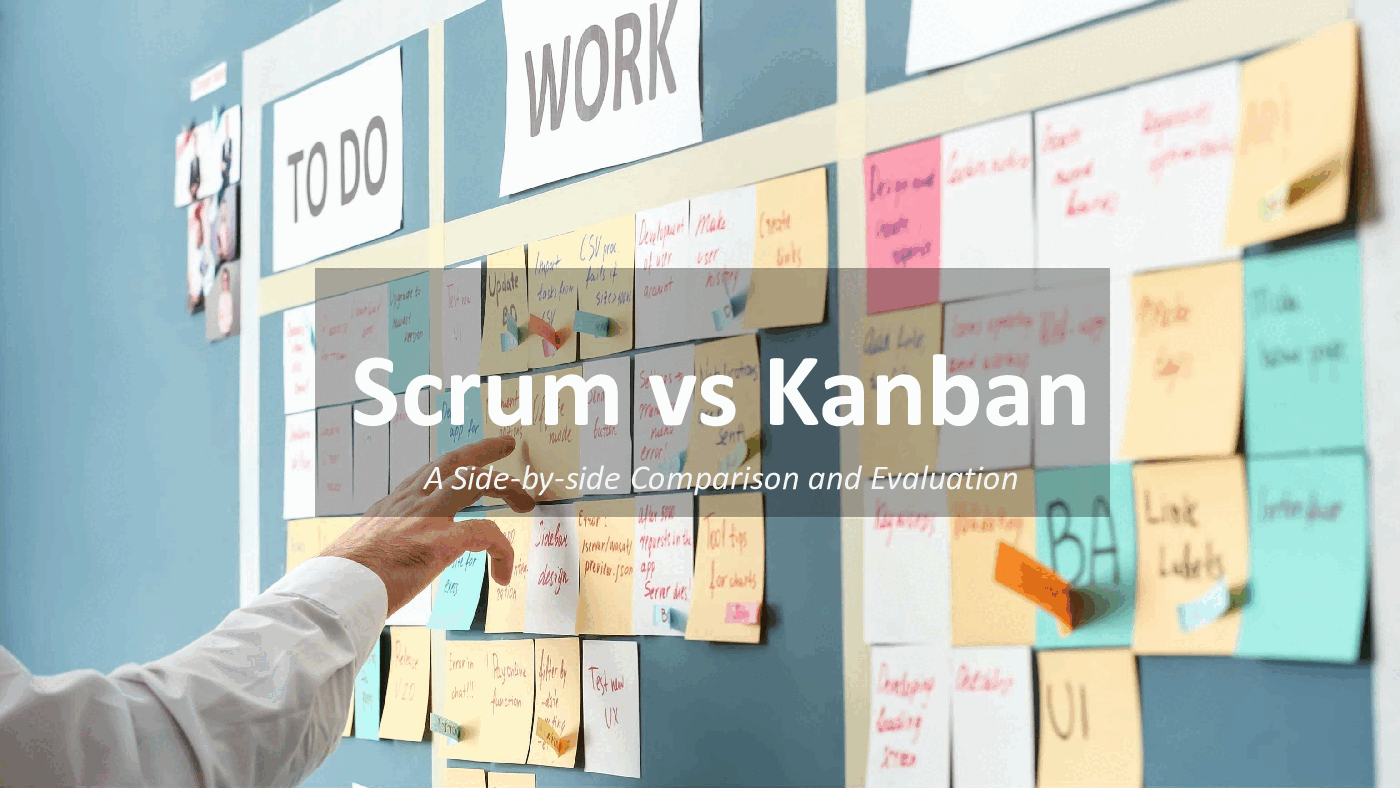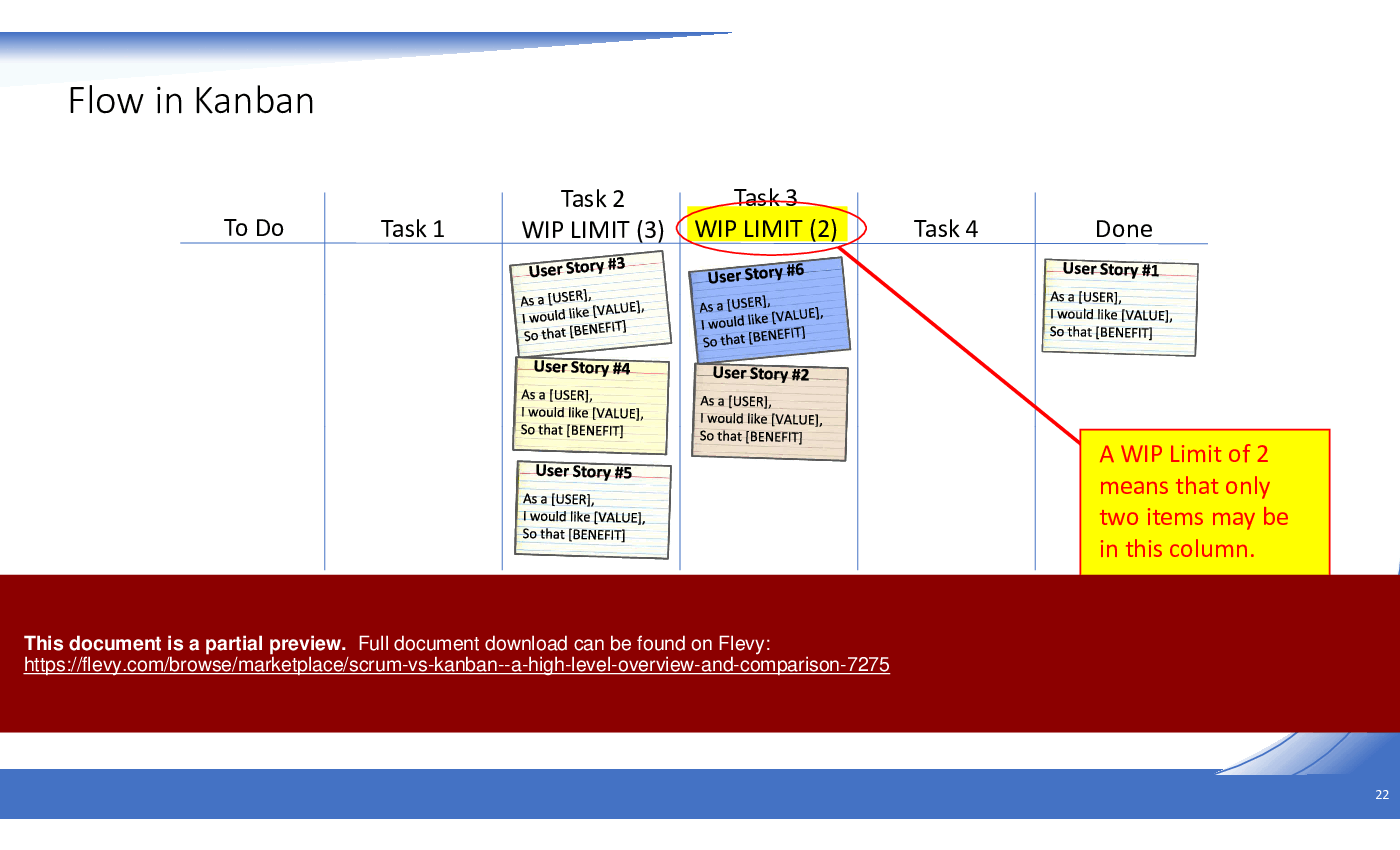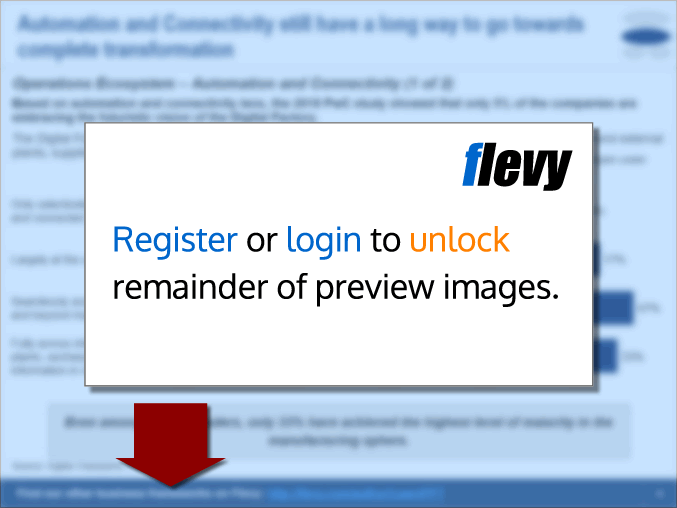Scrum vs. Kanban - A High Level Overview and Comparison (PowerPoint PPTX Slide Deck)
PowerPoint (PPTX) 43 Slides
BENEFITS OF THIS POWERPOINT DOCUMENT
- Fantastic graphic elements created in native PowerPoint are fully editable.
- Helps teams that are on the fence with regard to using Scrum or Kanban and clears up all ambiguity regarding which framework might fit best.
- Top level overview makes deciding upon a framework a simple process.
KANBAN PPT DESCRIPTION
Scrum and Kanban are both project management frameworks that fall under the Agile umbrella. While they share some similarities, they have distinct differences in terms of their approach and practices.
Some of the key differences are:
Origins: Scrum originated from software development, while Kanban has its roots in lean manufacturing.
Principles and Ideology:
Scrum emphasizes learning through experiences, self-organization, prioritization, and continuous improvement.
Kanban focuses on visualizing work, limiting work in progress, and maximizing efficiency or flow.
Cadence:
Scrum follows regular, fixed-length sprints (typically two weeks) where work is completed in iterations.
Kanban follows a continuous flow approach without predefined time-boxed iterations.
Practices:
Scrum utilizes practices such as sprint planning, daily scrum meetings, sprint review, and sprint retrospective to structure and manage work. Kanban focuses on visualizing the flow of work, limiting work-in-progress, managing flow, and incorporating feedback loops.
Roles:
Scrum defines specific roles, including a product owner, scrum master, and development team.
Kanban does not have required roles, allowing for more flexibility in team composition, although common practice has similar roles, namely Service Delivery Manager, Service Request Manager, Delivery Team Member.
Visualization:
Kanban places a strong emphasis on visualizing work using a Kanban board, where tasks progress through columns representing different stages of work.
Scrum does not have a specific visual framework like Kanban's board, although some Scrum teams may use visual elements to enhance collaboration and transparency – specifically, a Scrum Board, although it is not strictly prescribed.
Sprint Length:
Scrum typically operates in short development cycles called sprints, lasting from one to four weeks.
Kanban does not have predefined sprint lengths and instead focuses on continuous flow and completing tasks as they arise.
This PowerPoint Workshop covers all of the basics of both Scrum and Kanban and outlines their similarities and differences. The deck is packed with original graphics that are fully editable. The graphics are created in native PowerPoint. In the Appendix, there are some animations to show some of the elements of Scrum and Kanban and how they fit together.
Got a question about the product? Email us at support@flevy.com or ask the author directly by using the "Ask the Author a Question" form. If you cannot view the preview above this document description, go here to view the large preview instead.
Source: Best Practices in Kanban, Scrum PowerPoint Slides: Scrum vs. Kanban - A High Level Overview and Comparison PowerPoint (PPTX) Presentation Slide Deck, ddelpercio









